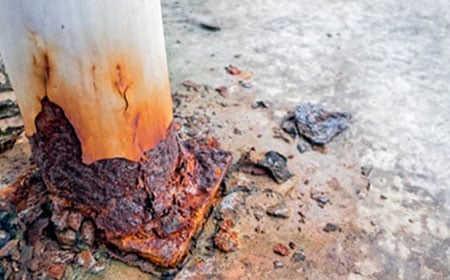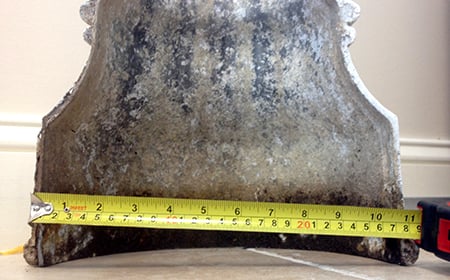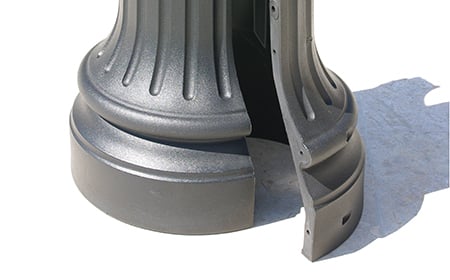The Problem with Metal
Steel corrodes and rusts where our aluminum and resin (bases) options do not.
Steel is not a pure metal, but actually an alloy mixture of iron and carbon. Iron comes from the earth as a natural ore. This creates problems in construction from the amount of carbon in the ore. To make steel, iron is melted to reduce the carbon; at which point other elements are added. What all of this means is that iron is susceptible to rust and corrosion.
Iron Rusts
When iron comes into contact with water, oxygen, other oxidants or acids, it rusts. If salt is present in the air from seawater or icy roads, the iron rusts at an accelerated pace. Oxygen and water forms an oxide coating of ferrous oxide. Ferrous oxide rust is usually permanent, weak and unsightly.
Another degrader of iron and its alloys is carbon dioxide. The oxygen in carbon dioxide forms iron hydroxide. Hydroxide molecules flake off from the outer layer, exposing the next layer of iron to the oxidizing elements. As the new iron becomes exposed, reacts and flakes off, the corrosion continues until the iron is consumed.
The oxides formed by corrosion take up more space than the original metal. This expansion in volume eventually generates at a tremendous growing force, causing irreparable damage to iron structures.
Steel Corrodes
The corrosion of steel is an electrochemical process. Moisture and oxygen combine to catalyze the process, which occurs in stages. The initial attack occurs on the surface. Electrons combine with water and oxygen, forming ions, which react with other ions to produce hydrated ferric oxide, or red rust.



Traditional Methods
A traditional metal light pole is made of galvanized steel. The most common galvanization method is to dip the steel parts into molten zinc.
The pole is then painted or sprayed with a layer of baked enamel or powder coat finish. Enamel is a special paint that dries to a hard glossy finish, applied as a paste or powder and then fired in a kiln. Baked enamel is a widely used method to protect surfaces for outdoor applications.
Powder coat is a powdered paint that doesn’t require a solvent to keep its elements in a liquid suspension form, like regular paint. Powder coat is usually applied electrostatically, which is an electrically charged form of spraying, and then heat-cured to form a skin.
Whether baked enamel or powder coat, the layer is very thin and can easily be damaged.
Any tiny injury gives corrosion an entry point that cannot be stopped, slowed, or reversed. Corrosion can eat its way right into the core of a metal light pole. This causes expansion, weakness, and eventually crumbling or decomposition.
Traditional light poles have a clamshell style base, leaving weak spots open for the intrusion of corrosion. These weak spots can suffer pitting and rotting from small injuries, leading to the compromising of the protective outer coating.
About Us
All of our products are made in America. All offices, warehouses, facilities and factories stand proud on US soil. Originally founded in 1969, we have remained an American owned and operated company.
Our Products
A Terracast® product is designed to beat out the competition in every conceivable way. Our products are customizable, lightweight, weather/graffiti resistant, eco-friendly, and almost indestructible.
Contact Us
When you contact Terracast® you will always be met with a friendly voice. We want to make sure you are well taken care of whether you're a new customer or have been doing business with us for 20 years.
